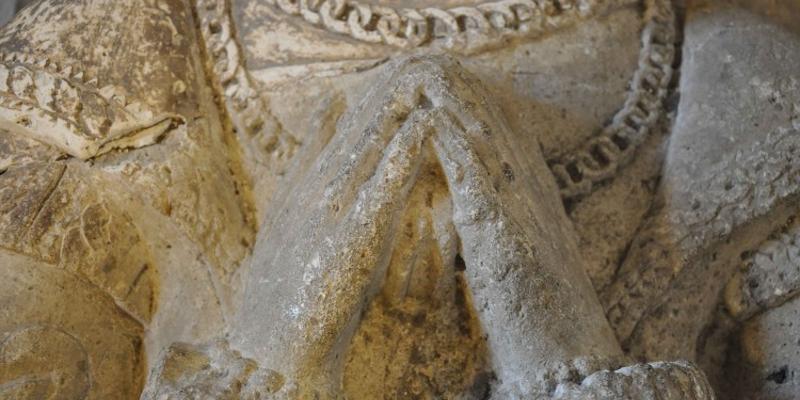16 Centuries of Continuous Prayer

What makes Llanilltud Fawr so special? Many people are amazed by the fact that Llanilltud is the oldest seat of learning in Britain, others may be captivated by the ancient Celtic stones or the beautiful features contained within the church building and its many and various artefacts. However, the one single thing which amazes and inspires me the most is the fact that since Illtud established his community on the banks of the Ogney Brook around the year 500AD there has been unbroken continuity of prayer upon this holy site. Reverend Huw Butler, writing in Pew News, October 2013.
Continuous prayer
One of my favourite stories of Illtud is the account of how he organised his community into 24 groups, each group being allocated an hour to pray during the course of the day (or night as the case may be!). In this way prayer was continuous within the life of the community. Students travelled from far and wide to learn from Illtud, ‘the most learned of all the Britons’, and to experience living within a community with prayer at its heart. I like to imagine the young Samson, Gildas, Paul Aurelian and the many others training to be monks getting up in the middle of the night to faithfully observe their hour of prayer. Illtud, in turn, had been inspired by the early Christians of the 3rd & 4th centuries in the Middle east known as the Desert Fathers who devoted themselves to a life of prayer and solitude seeking to live to St. Paul’s words and ‘pray without ceasing’ [1 Thess. 5:17]. (The word monk derives from monos meaning ‘alone’). However, what made Llanilltud distinctive was the fact that it was a community which devoted itself to prayer alongside the concerns of daily living – family life, farming the land, education, hospitality, caring for others, recreation – all of the things which make up the very stuff of life. Prayer suffused everything that they did – like the patterns on the Celtic stones it weaved into all of their activity heightening their awareness of the presence of God in and through all things.
Symbols and reminders of prayer
As the centuries passed the pattern of prayer undoubtedly changed – continuous structured prayer throughout the 24 hours of each day probably became relaxed to the discipline of distinct periods of prayer to “punctuate” the day. Apart from the sketchy but intriguing information inscribed upon the Celtic Stones (8th-11th centuries) little is known about the life of Llanilltud during these Dark Ages apart from the fact that the life of the church was structured around the ‘clas’. As local historian, Viv Kelly, often explains to visitors during his guided tours, ‘nepotism ruled’ during this period – the clas being a family community along the lines of a clan, notable members of the family being considered as royalty and some being selected to serve as priests. The most well known of our crosses – Houelt Cross – carries the inscription: In the name of God the Father and of the Son and of the Holy Spirit. Houelt prepared this cross for the soul of Res his father. This probably refers to Hywel ap Rhys, who was king of the land extending from the Tawe to the Usk in the 9th century. It is significant that the inscription itself is a prayer – the Celtic stones being more than just memorials but symbols and reminders of prayer for those who look upon them.
7 ‘offices’ of prayer
When the Normans arrived at the end of the 11th century Llanilltud developed a different character. A new church was built (West Church) and in 1102 the whole site was gifted to Tewkesbury Abbey by the Lord of Glamorgan – Robert Fitzhamon. During the 13th century the church building was extended to incorporate the East Church with the Galilee Chapel to the west. The few monks in residence during that time would have held a strict pattern of prayer, according to the Rule of St. Benedict, 7 ‘offices’ at specific times throughout the day to regulate their pattern of daily prayer, work and study.